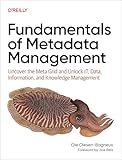Best Data Management Tools to Buy in December 2025

Designing Data-Intensive Applications: The Big Ideas Behind Reliable, Scalable, and Maintainable Systems



The Manager's Path: A Guide for Tech Leaders Navigating Growth and Change



Fundamentals of Metadata Management: Uncover the Meta Grid and Unlock IT, Data, Information, and Knowledge Management



Data Stewardship: An Actionable Guide to Effective Data Management and Data Governance



Membership Manage Professional; 100,000 Member Database Tracking and Management Software; Multiuser License (Online Access Code Card) Win, Mac, Smartphone
- LIFETIME ACCESS: ONE-TIME PAYMENT, NO MONTHLY FEES!
- EASILY MANAGE MEMBER DETAILS AND ATTENDANCE TRACKING.
- STREAMLINE BILLING & INVOICING WITH EVENT REGISTRATION REMINDERS.



Data Governance: How to Design, Deploy, and Sustain an Effective Data Governance Program


To change the data type of a column in Pandas, you can use the astype() method. This method allows you to convert the data type of a column to a specified type. Here's how you can do it:
- Access the column you want to change its data type using the column name, like df['column_name'], where df is the DataFrame object.
- Apply the astype() method to the selected column and pass the desired data type as an argument. For example, if you want to convert the column to an integer type, use df['column_name'] = df['column_name'].astype(int). Similarly, you can use other data types like float, str (string), datetime, etc.
- The astype() method returns a modified column with the specified data type. If you want to overwrite the existing column in the DataFrame, assign the modified column back to the same column name using df['column_name'] = modified_column.
Here's an example that demonstrates the process:
import pandas as pd
Create a sample DataFrame
data = {'Name': ['John', 'Alex', 'Emma', 'Grace'], 'Age': ['25', '31', '28', '22'], 'Salary': ['2500', '3500', '2700', '2100']}
df = pd.DataFrame(data)
Print initial data types
print(df.dtypes)
Convert the 'Age' column to integer type
df['Age'] = df['Age'].astype(int)
Convert the 'Salary' column to float type
df['Salary'] = df['Salary'].astype(float)
Print final data types
print(df.dtypes)
In the above example, we initially have the 'Age' and 'Salary' columns as strings. We convert the 'Age' column to integer type using astype(int), and the 'Salary' column to float type using astype(float). Finally, the updated data types are printed.
What is the significance of ordered categorical data type in Pandas?
The significance of the ordered categorical data type in Pandas is that it allows for representation and analysis of data that has a defined order or ranking.
In many real-world scenarios, variables have a natural ordering, such as ratings (e.g., low, medium, high), grades (e.g., A, B, C, D, F), or age groups (e.g., child, teenager, adult, elderly). By assigning a specific order to these categories, it becomes possible to perform operations like sorting, comparison, and slicing based on this order.
The ordered categorical data type in Pandas provides a way to encode these ordered categorical variables efficiently. It offers benefits like reduced memory usage and improved performance compared to storing the categories as strings or integers.
Furthermore, using the ordered data type in Pandas enables the application of specific methods, such as accessing the next or previous category, calculating the relative position of a category, or using the ordered categories in statistical and machine learning models.
Overall, the ordered categorical data type in Pandas allows for better handling and analysis of variables with an inherent order, enhancing the functionality and capabilities of data analysis and manipulation.
What is the purpose of the pandas.to_datetime() function?
The purpose of the pandas.to_datetime() function is to convert a string or an object that represents a date or datetime into a pandas datetime object. It allows for easy manipulation and analysis of dates and times within a pandas DataFrame or Series. The function can handle various datetime formats and provides flexibility in parsing and converting date or datetime strings.
How can I modify the data type of a column in Pandas?
To modify the data type of a column in Pandas, you can use the astype() function. This function allows you to convert a column to a specified data type. Here's an example:
import pandas as pd
Create a DataFrame
data = {'Column1': ['1', '2', '3', '4', '5']} df = pd.DataFrame(data)
Check the data types of the columns
print(df.dtypes)
Output:
Column1 object
dtype: object
Convert the 'Column1' to integer data type
df['Column1'] = df['Column1'].astype(int)
Check the modified data types
print(df.dtypes)
Output:
Column1 int64
dtype: object
In this example, the astype(int) function is used to convert the 'Column1' from object type to integer type. You can use other data types like float, string, datetime, etc. based on your requirement.
What is pandas.DataFrame.astype() method used for?
The pandas.DataFrame.astype() method is used to change the data type of one or more columns in a DataFrame. It returns a new DataFrame with the specified data types. This method is useful when you want to convert the data within a DataFrame to a different type, such as from integer to float, or from string to datetime.
